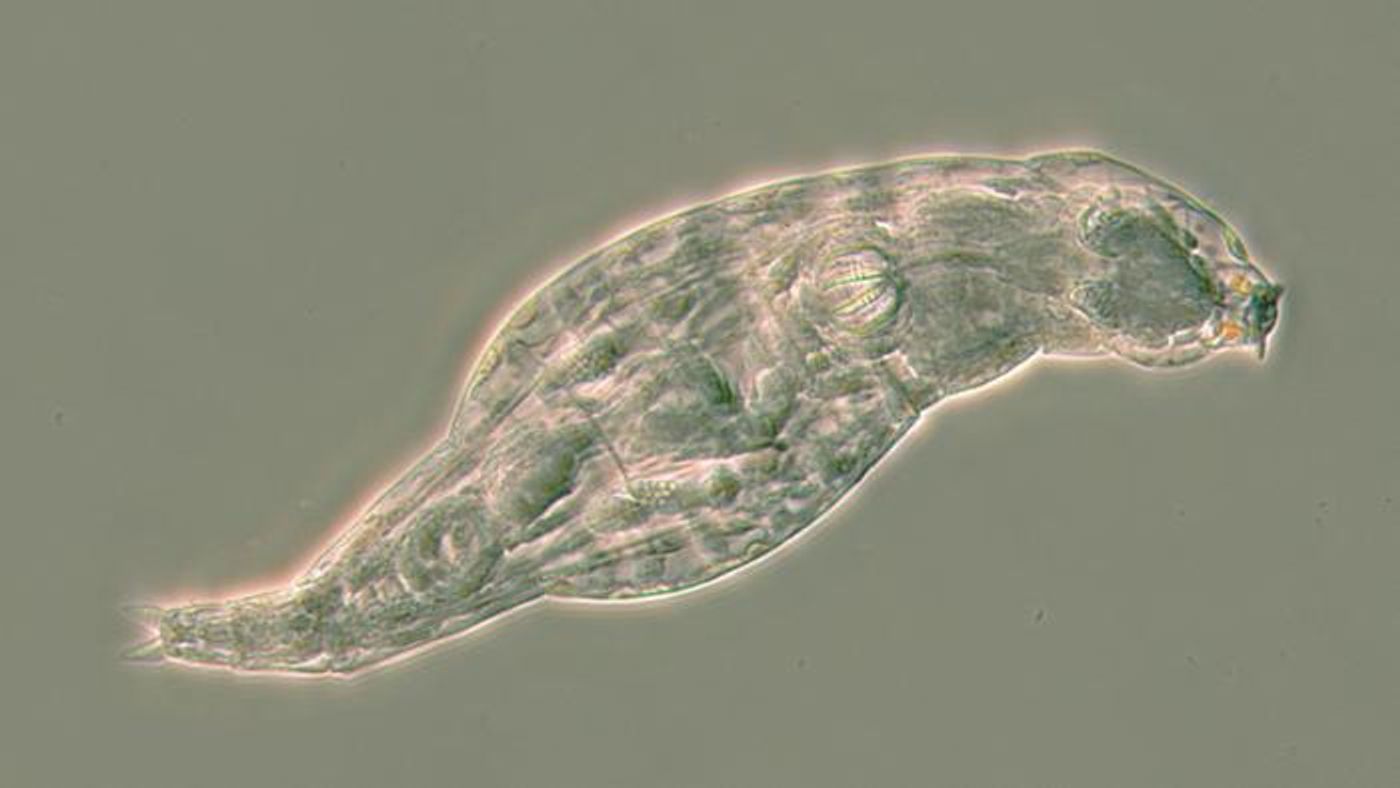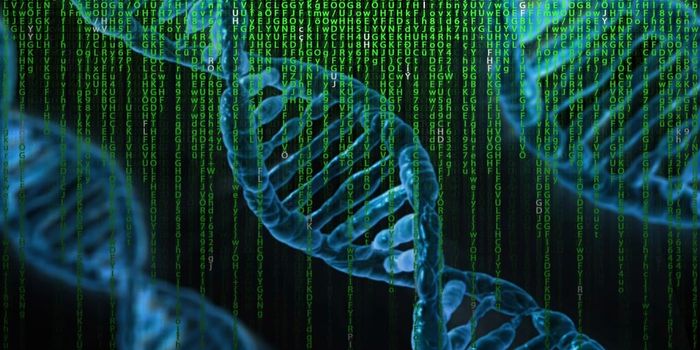To Ensure Survival, Rotifers Steal an Array of Genes From Microbes
Bdelloid rotifers are tiny freshwater creatures that are smaller than the width of a human hair, but still have a head, mouth, gut, and other structures. New research has shown that these little animals can fend off infections by 'stealing' genes from bacteria. The work showed that when rotifers are threatened with fungal infection, they activate hundreds of genes that they have picked up from microbes like bacteria and archaea. Since bacteria and other single-celled organisms and viruses have long been engaged in a kind of molecular arms race, some of these microbial genes generate antimicrobial agents. The findings have been reported in Nature Communications.
While previous research has determined that rotifers can aquire DNA from their environment, and have been able to do so for millions of years, this study is the first to show that the rotifers can use these acquired genes to stop disease.
"When we translated the DNA code to see what the stolen genes were doing, we had a surprise," said lead study author Chris Wilson of the University of Oxford. "The main genes were instructions for chemicals that we didn't think animals could make; they looked like recipes for antibiotics."
Some of these genes are complex and are not found in any other animal, because they arose in bacteria but then were gained by rotifers, where they evolved. The study has also suggested that rotifers can make novel antimicrobials that could be safer for humans than those we gain from bacteria or fungi, said study co-author David Mark Welch, senior scientist and director of the Josephine Bay Paul Center at the Marine Biological Laboratory, Woods Hole.
Since many traditional antibiotics have become less effective in recent years, as pathogenic microbes have gained resistance to many of these drugs, scientists have long been searching for novel antibiotics. While we can get some antibiotics from microbes, developing new ones is still very challenging, and any potential candidates have to undergo extensive testing. That is especially true for antifungals, since fungi are made of the same type of cells as humans - eukaryotic cells (unlike the prokaryotic cells of bacteria). So if we're going to make new, effective, and safe antibiotics or antifungals, it's helpful to have many potential options. This study has indicated that rotifers may help in the search.
"The recipes the rotifers are using look different from known genes in microbes," added study author Reuben Nowell of the University of Stirling. "They're just as long and complicated, but parts of the DNA code have changed. We think the recipe has been altered by a process of evolution to make new and different chemicals in the rotifers. That's exciting because it might suggest ideas for future medicines."
The acquired genes in rotifers encode for enzymes that use amino acids to generate molecules called non-ribosomal peptides.
Since rotifers do not use sex to reproduce (they lay eggs that are genetic copies of themselves), they have to find ways to change their genes or be threatened with extinction when a disease arises, explained study co-author Tim Barraclough of the University of Oxford. This could explain why they grab so many genes from other organisms.
Sources: Marine Biological Laboratory, Nature Communications









